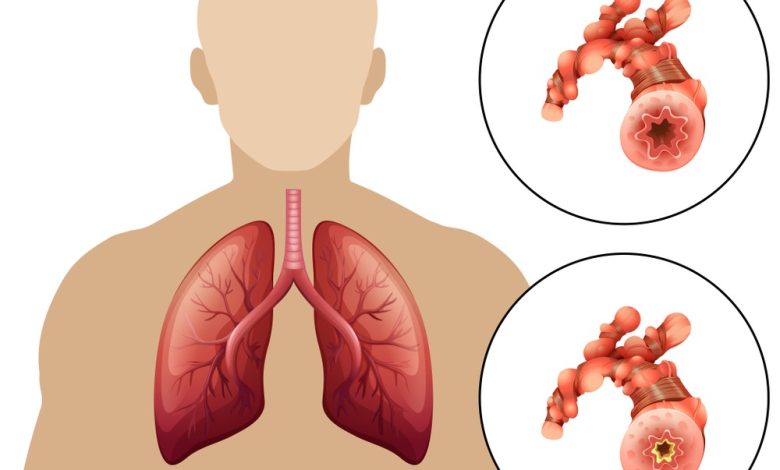Can Asthma and Chronic Obstructive Pulmonary Disease (COPD) overlap?

Introduction
Chronic obstructive pulmonary disease (COPD) and asthma are pulmonological abnormalities that affect the lungs, involving airway obstruction due to swelling that makes breathing difficult. However, they have different causes and treatments, so people with lung issues need to understand the difference between COPD and asthma.
A key difference to note is the difference between the causes of swelling in both of these conditions. In asthma, irritants like pollen, mold, or even physical activity can cause inflammation. COPD is a broad term for a bunch of lung conditions that may include chronic bronchitis and emphysema, most of which have smoking as their primary cause.
Continue reading this blog to find out the key differences between chronic obstructive pulmonary disease (COPD) and asthma and learn about Revival’s asthma and COPD clinical trials.
Are Asthma and COPD the Same?
Both chronic obstructive pulmonary disease (COPD) and asthma can cause severe distress and respiratory complications, but they’re different from each other. So, how are chronic obstructive pulmonary disease (COPD) and asthma different?
Chronic obstructive pulmonary disease (COPD) and asthma are not only different because of distinct causes but also differ in their course of action. Asthma typically occurs as periodic attacks that can come and go at different intensities. Conversely, COPD is a progressive disease that occurs over time and brings about structural changes in the airways. COPD reduces elasticity in the small air sacs of the lungs called the alveoli. This progressive change sets COPD apart from asthma, where there is a sudden worsening of symptoms.
What Is Asthma-COPD Overlap?
It is possible to have chronic obstructive pulmonary disease (COPD) and asthma at the same time. If one has symptoms of both of these diseases, the healthcare providers may call it asthma-COPD overlap (ACO).
The exact causes of ACO (Asthma-COPD Overlap) remain unclear to this day; however, one might develop ACO due to long-term COPD. This is because it can alter lung function and increase the likelihood of ACO. Alternatively, it could happen if someone continues to smoke with preexisting asthma.
Since ACO is more dangerous than asthma or COPD alone, it is important to diagnose and treat this condition urgently. While there is no cure for ACO as of now, available treatment may help one improve their breathing and quality of life.
Chronic obstructive pulmonary disease (COPD) vs Asthma symptoms
Chronic Obstructive Pulmonary COPD Symptoms
- Frequent coughing or wheezing
- Excess phlegm or sputum
- Shortness of breath
- Trouble taking a deep breath
Asthma Symptoms
- Episodes of shortness of breath
- Dry cough
- Chest tightness
- Spasms in lung bronchioles
Additional symptoms for asthma-COPD overlap may include:
- Flare-ups or times when symptoms get worse but usually get better with medicine. These medications may include bronchodilators that open your airways
- Neutrophils or eosinophils (white blood cells linked to inflammation) in your spit
The worst thing about asthma-COPD overlap is that it causes symptoms that are worse than each asthma and COPD individually and causes more severe attacks frequently.
Asthma-COPD Link
Asthma and COPD are linked, as research suggests that having asthma in childhood can increase the risk of developing COPD later in adulthood. While many children do eventually recover as they get older, sometimes asthma can persist and affect the lungs.
Experts think that asthma may either directly cause COPD or act as a contributing factor that leads to the development of COPD in adulthood. This is especially true when children have had persistent asthma in their childhood and struggle with breathing difficulties almost daily.
Furthermore, the majority of the children with persistent asthma had reduced lung capacity or growth by their early twenties, potentially leading to COPD later in life. Additionally, it is noteworthy that boys are more likely to encounter lung-related diseases than girls.
Treatments
Treatment approaches vary between asthma and chronic obstructive pulmonary disease COPD, because of the nature of their symptoms and progression.
Medications for asthma are mainly of two types:
- Quick-relief medicines: These are used during asthma attacks to relieve symptoms. These include short-acting beta-agonists and anticholinergics, both of which relax airways and reduce lung mucus.
- Long-term medicines: These are taken daily to maintain control over asthma symptoms. These include corticosteroids that reduce lung swelling and can be given as inhalers or oral medications.
- Sometimes, long-acting beta-agonists inhaled to relax airway muscles are used in combination with other asthma medications.
- Other anti-inflammatory drugs, like cromolyn prevent airway swelling.
- Leukotriene modifiers, available in pill or liquid form, block the process leading to airway swelling.
- Immunomodulators, also known as biologics, directly influence the immune system.
- Theophylline aids in opening airways.
- Immunotherapy options, such as allergy shots or sublingual tablets, may be suitable for individuals with allergy-triggered asthma.
On the other hand, chronic obstructive pulmonary disease (COPD) presents daily symptoms that tend to worsen progressively over time. COPD treatment involves a combination of similar medications used in asthma treatment, as well as some differences:
- Bronchodilators: relax airway muscles.
- Corticosteroids: reduce airway swelling.
- Combination inhalers containing both corticosteroids and one or more bronchodilators facilitate breathing through different mechanisms.
- Phosphodiesterase-4 (PDE4) inhibitors: decrease lung swelling to prevent COPD exacerbations.
- Antibiotics: are administered to treat infections that can exacerbate COPD symptoms.
Non-pharmacological treatments are also beneficial for controlling COPD symptoms:
- Pulmonary rehabilitation programs offer exercises: dietary recommendations, and lifestyle tips to enhance the quality of life for individuals with COPD.
- Supplemental oxygen therapy: can be necessary if the lungs cannot efficiently oxygenate the blood, requiring the use of oxygen tanks or machines.
- Surgery: involves the removal of damaged lung areas to improve the function of healthier regions.
Conclusion
Chronic obstructive pulmonary disease (COPD) and asthma are common lung conditions that can occur concurrently. Whether someone has COPD, asthma, or both conditions, smoking cessation is one of the most important lifestyle changes one can make. One should also avoid other lung irritants, such as spray chemicals, allergens like mold and pollen, scents like perfumes, and exposure to passive smoke.
Revival Research Institute is a leading clinical research organization in the United States with many trials in the areas of internal medicine and pulmonology. We offer both asthma and COPD clinical trials that may help people manage their condition and contribute to the development of modern medicine.
Also Read: Top 15 Vitamins & Supplements for Men in Their 30s



